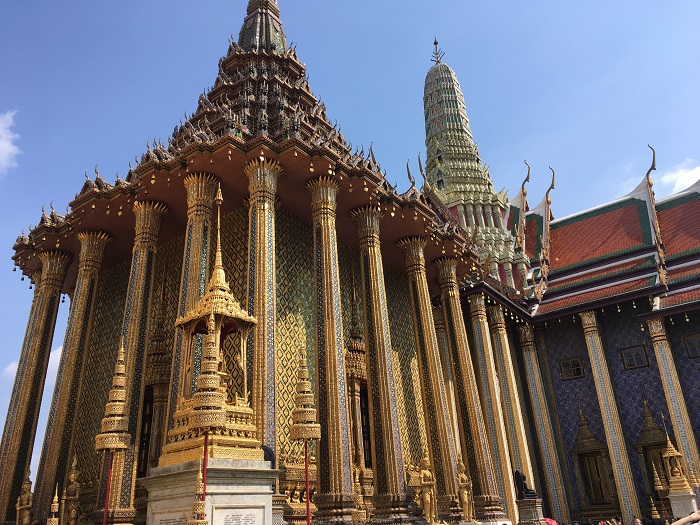
Guest blogger, most excellent travel partner and spousal unit Thor Hansen, muses about sacred-space ornamentations around the world.
Greetings Bibliophiles! Sara is insanely busy cleaning out her home office and more in preparation for our move, so she asked me if I would like to contribute a blog post. I suspect she also wants to keep me out of her hair while I mope around the house recovering from shoulder surgery. So here goes. She has been guiding you through our travels to exotic places with meticulously researched comments and insights about the local culture. I am more of a “big picture” sort of guy, meaning I just wander around and gawk at things. By way of example, here is a conversation I recorded in Greece after Sara had read a billboard-sized caption on a pile of rocks.
Sara: “Did you know that this was a castle that King Crowbar captured in 300 B.C.?
Thor: “Really?”
Sara: “Yes! And his son, Prince Masterlube, overthrew him 20 years later, just before the King of Ibuprofen invaded the island.”
Thor: “Wow.”
I treasure these exchanges. That said, while looking at photos from some of our trips I was fascinated by the different decorative styles employed on sacred sites around the world. For example, one cannot help but be awed by the profusion of architectural details on the temples in Bangkok. The Grand Palace is a particularly good example. Look at this picture of one part of the palace (top photo). You can see how every surface is intricately decorated.
Now look at this closer view; detail upon detail.
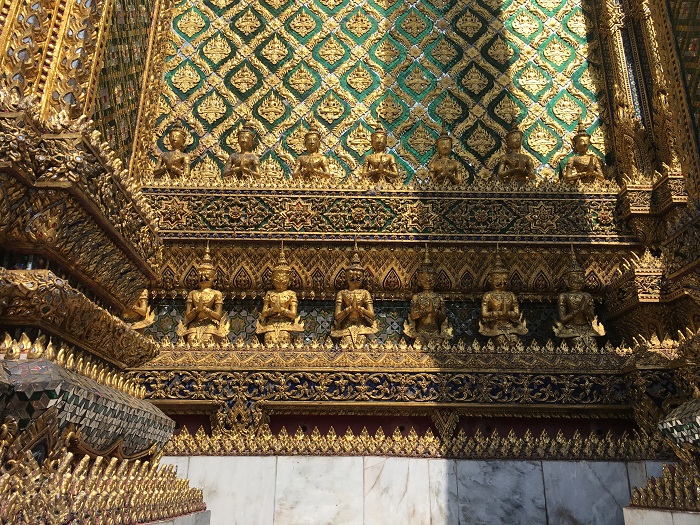
And let’s get closer still.
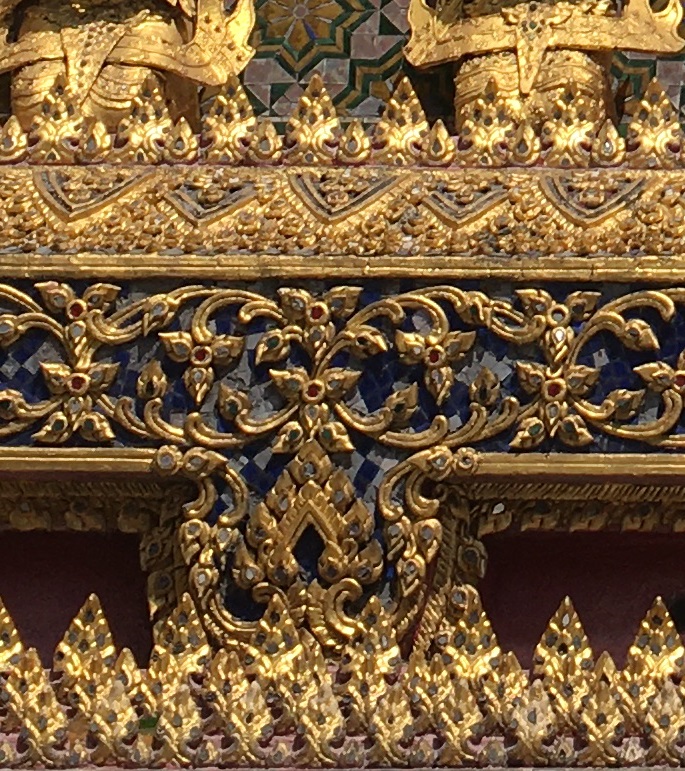
Look at that! Tiles and little jewels and filigree on every inch. The whole building is like that. I cannot wrap my mind around the amount of work and time involved in creating that. Note that the surface is entirely tile or some kind of gilded/painted metal and such. I will get back to this later. If you wander around Thai temples you also see some interesting figures. Such as this: Strange demonic beings.
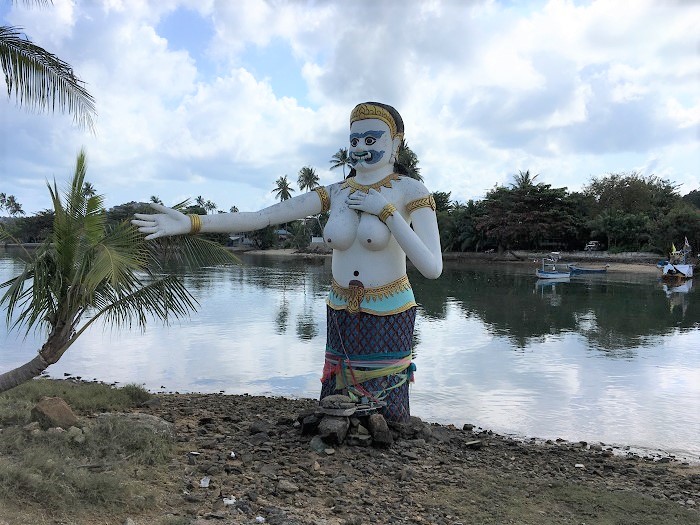
This made me want to compare the Thai temples to some other sacred sites that we have visited around the world. For example, here is the front of the Duomo in Florence. As you can see, it too is ornately decorated.
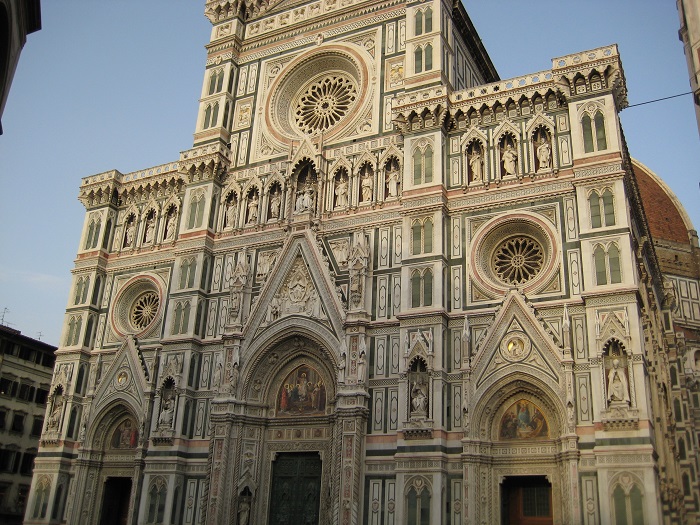
Western European sacred sites are often covered in carvings and tend to have more human statues in their decorations, though they also love the occasional gargoyle as in this image from the Notre Dame in Paris.
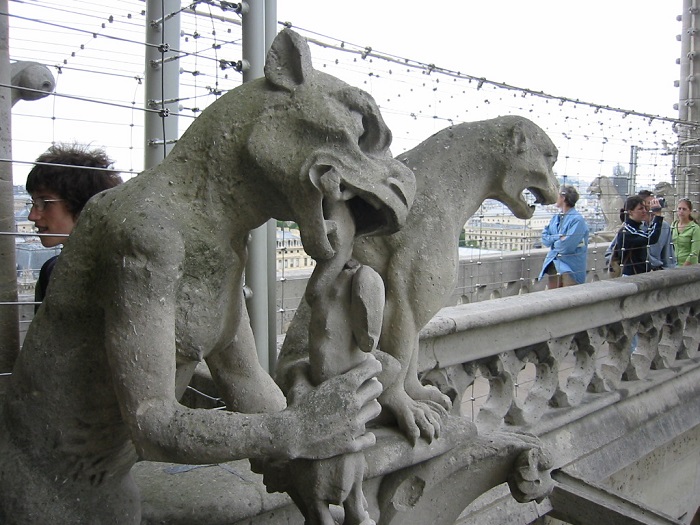
The intricate carvings on European cathedrals are possible because they were built with limestone, which is soft and easily carved. Unfortunately limestone erodes easily, especially in industrialized cities with lots of smog and acid rain, as you can see below.
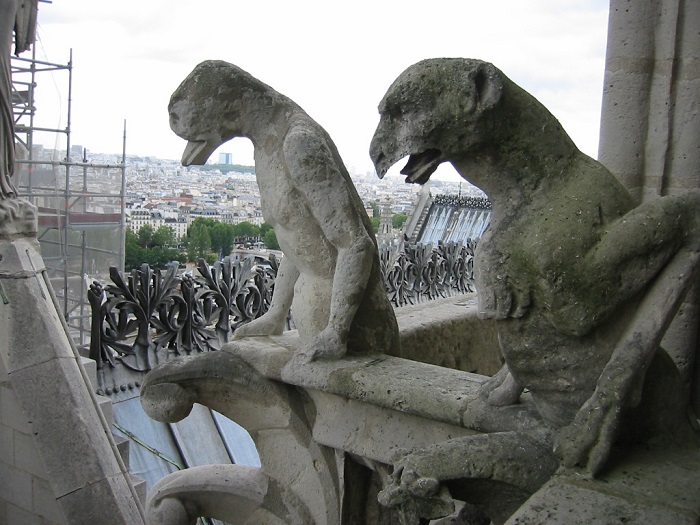
This means that gothic cathedrals in Europe must be constantly maintained and the carvings periodically replaced. which is why they so often look like this: Facades covered in scaffolding while workers clean and replace statuary.
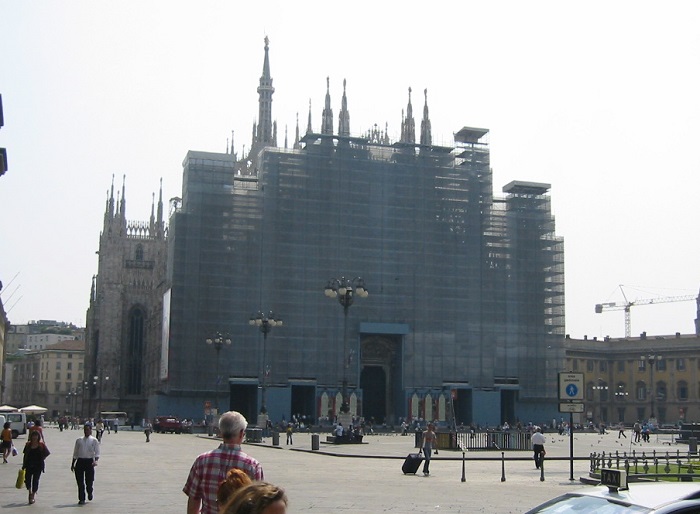
So remember, when you go to one of these Medieval buildings and see all those beautiful carvings on the outside… they are new! If you want to see the old stuff, you need to go inside. Remember I mentioned how the Thai temples were covered in tile and gilded surfaces? They do not erode as easily.
So what about sacred sites in other cultures? Are they as grandiose in their décor? Let’s check out Chitzen Itza.
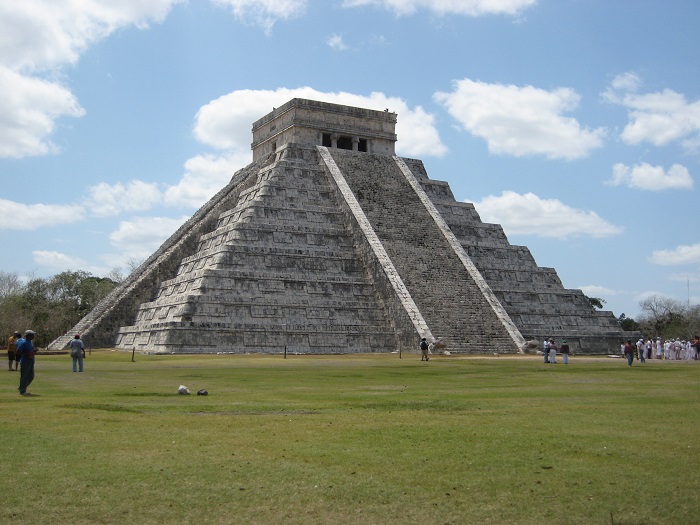
Doesn’t look too ornate from here. But here is a wall next to the grand pyramid. I chose this picture partly to embarrass Sara. This was taken on a trip when the airline lost our luggage, so we had to go to the local market and find something to wear in the hot climate. Her skirt is actually a petticoat.
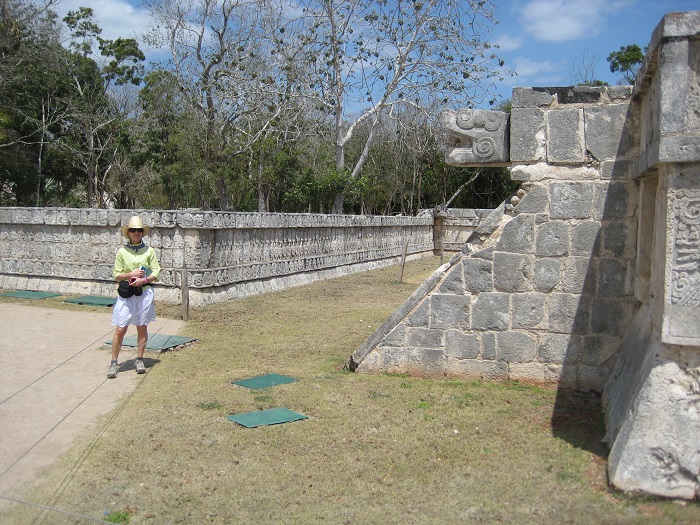
Let’s get closer to that wall behind her: Lots of skulls!
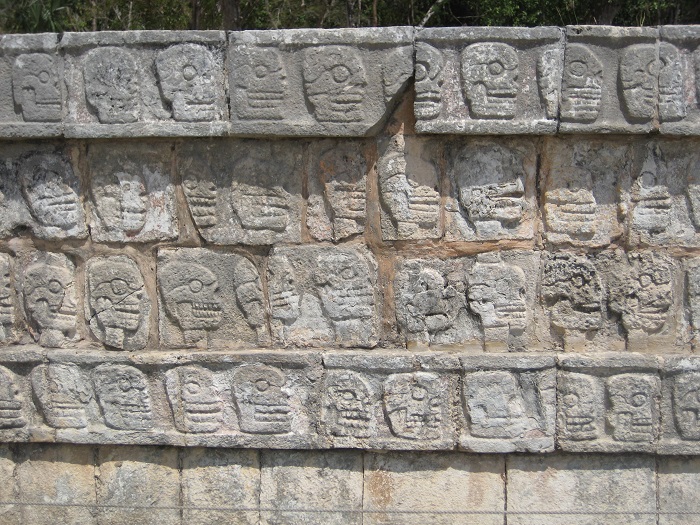
This one depicts a reclining human and some mythological animals.
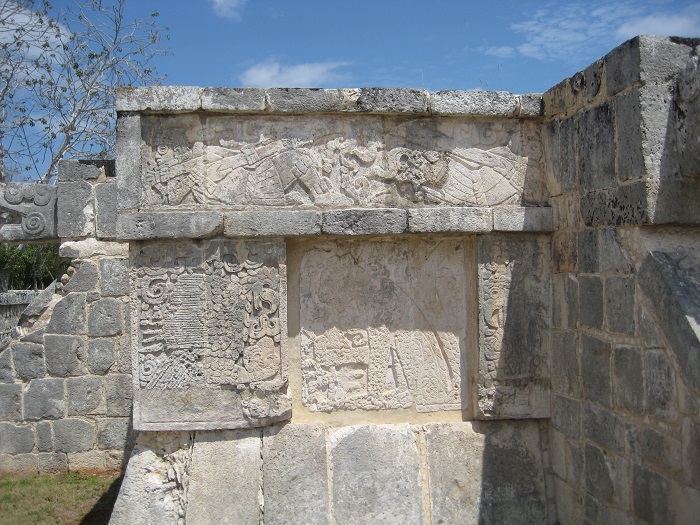
How about this façade with weird mythological beasts with lots of tongues!
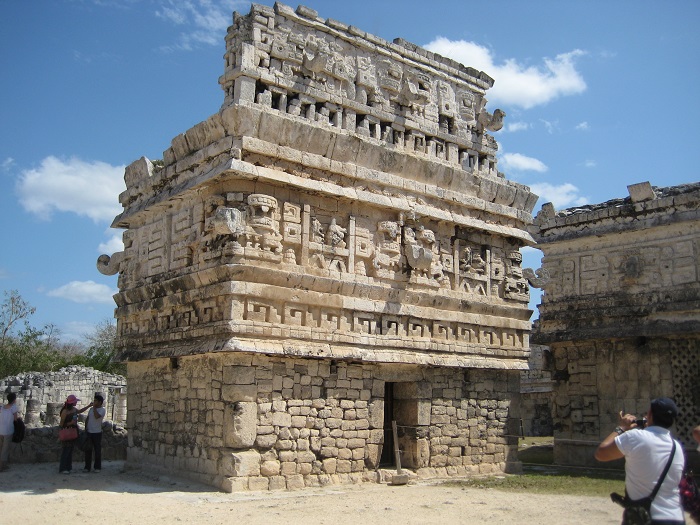
So the Mayans also loved to cover their sacred sites with intricate carvings. Like European cathedrals, these are also constructed with limestone, but they have survived much better than their European counterparts because the air is cleaner.
Now let’s really jump around in the space/time continuum and flash forward to the present. Here is a picture of the Sagrada Familia in Barcelona. One of the few great cathedrals built in modern times and still under construction.
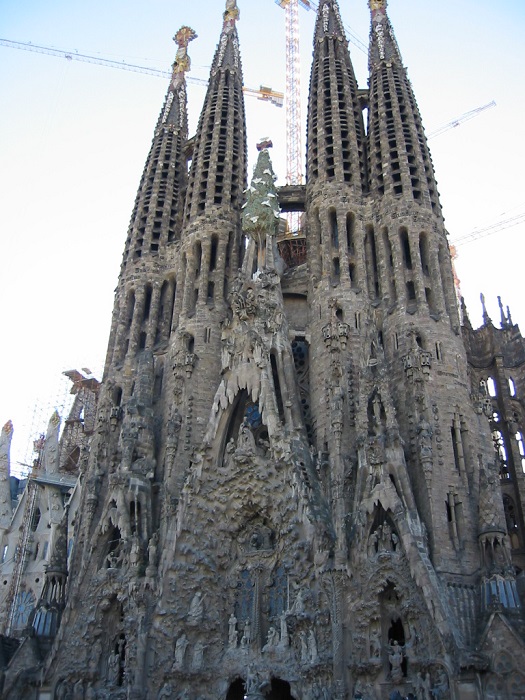
As you can see, it has a very different look; almost like a drip sand castle. The architect, Guadi, chose naturalistic themes that favored curves and organic shapes.
As you can see, it is a crowded scene with lots of humans interspersed with drippy stalactite-like formations.
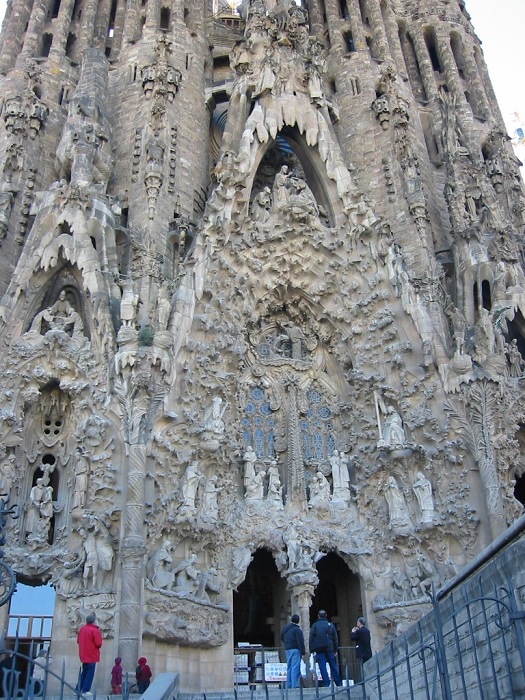
He also featured realistic animals. The snails below are identifiable right down to the species level. (note from Sara: Thor should know, as his Paleontology specialty was shells.)
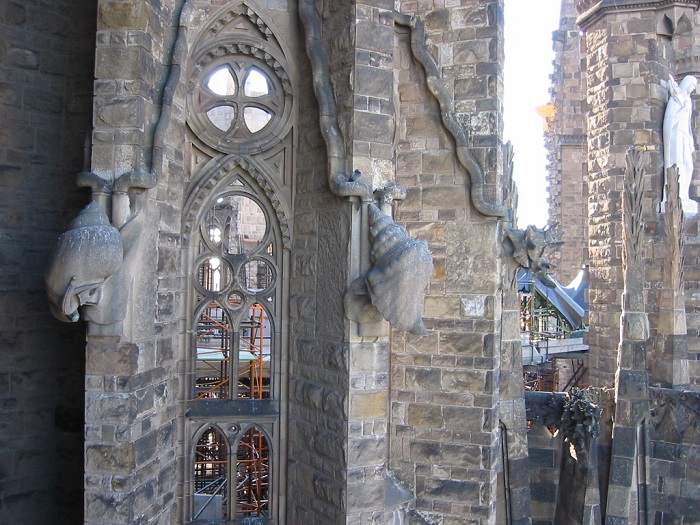
These snails are accurate right down to the particular species.
As long as we are here, let’s take a quick look inside at the nave. The support columns are designed to look like trees in a grove. The cathedral is nearly finished, and I can’t wait to go back and see it again.

Ready for another space/time jump? Let’s go to Bella Coola, British Columbia.
This is Chris Nelson, our guide to an ancient sacred site in the rain forest. Chris is a soft-spoken member of the Bella Coola tribe and the manager at the local visitor center. We arranged for a tour of the site and met him and his stepfather there. At the entrance to the glade, Chris said he needed to sing a traditional herald to welcome us. He had a drum, and as he beat it and sang, his voice got deeper and fuller and resonated through the forest.
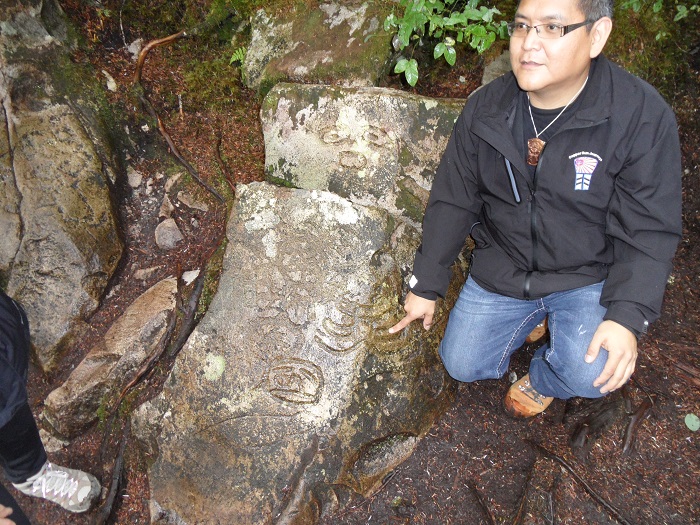
In the Canadian rain forest there is so much vegetation that it’s hard to find something to carve on. So when a good flat rock surface is exposed, it invites expression. Here is Sara talking to Chris’s stepfather. The setting is a beautiful clearing on the mountainside with exposed, glacially smoothed rock that was a magnet for indigenous carvers.
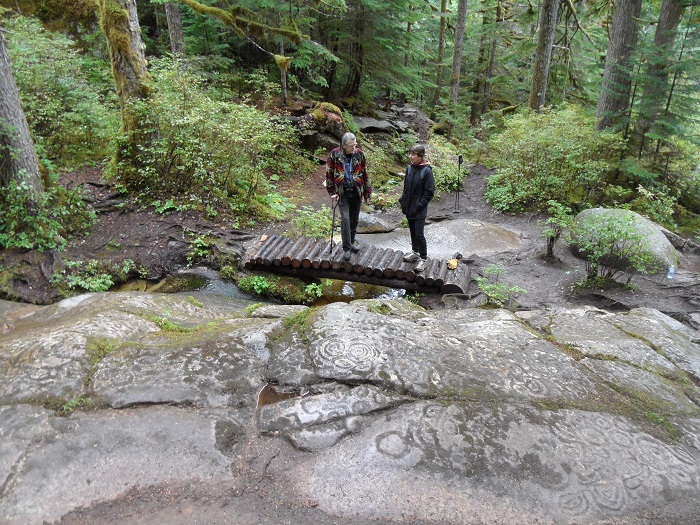
The carvings include stylized animals and lots of human faces with a wide-eyed kind of sorrowful look.
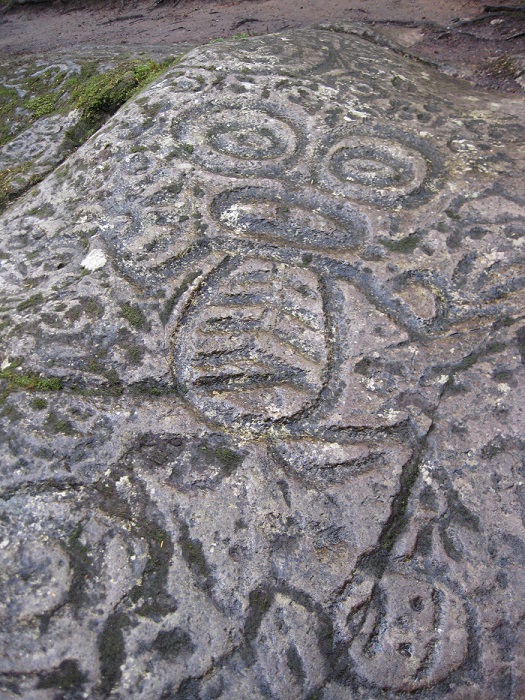
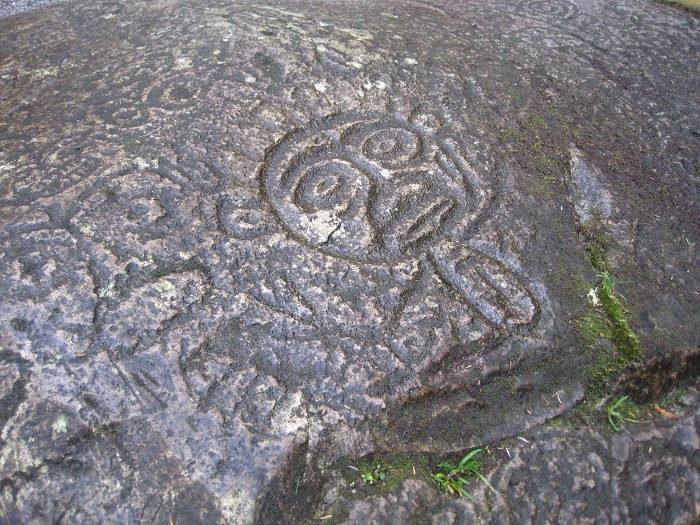
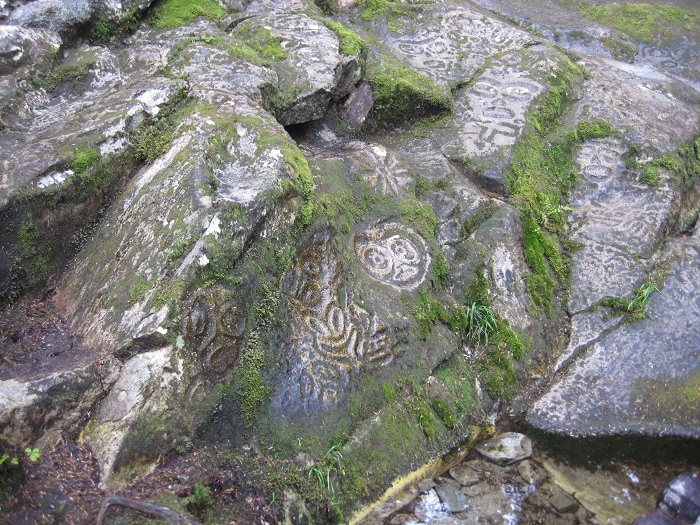
Chris told us about the residential schools where the government forcibly removed indigenous children from their homes in the early 20th century and sent them to boarding schools to “re-educate” them. As a result, much of the tribes’ oral history was lost, and this has left a very fresh psychic scar on the indigenous community. Chris apologized for his lack of knowledge about some of the figures; this knowledge has been lost. Of all the sacred sites I have discussed, this one probably affected me the most. I look at all those faces and feel like they are trying to tell me something, but I can’t hear them.
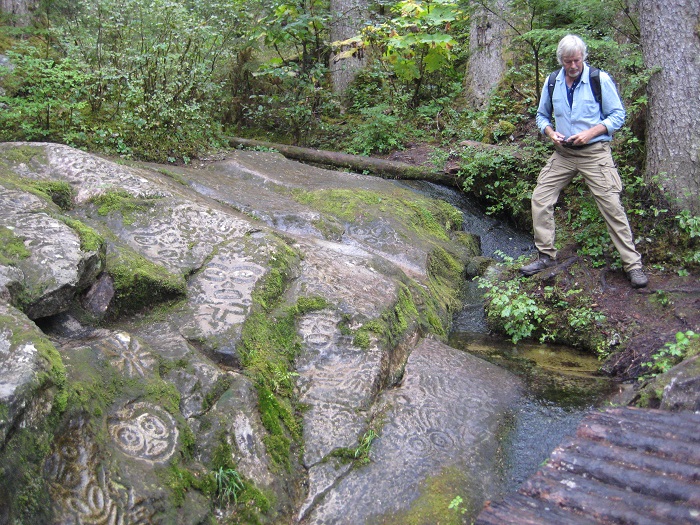
Well, thanks for your time. Maybe Sara will let me write another blog sometime.
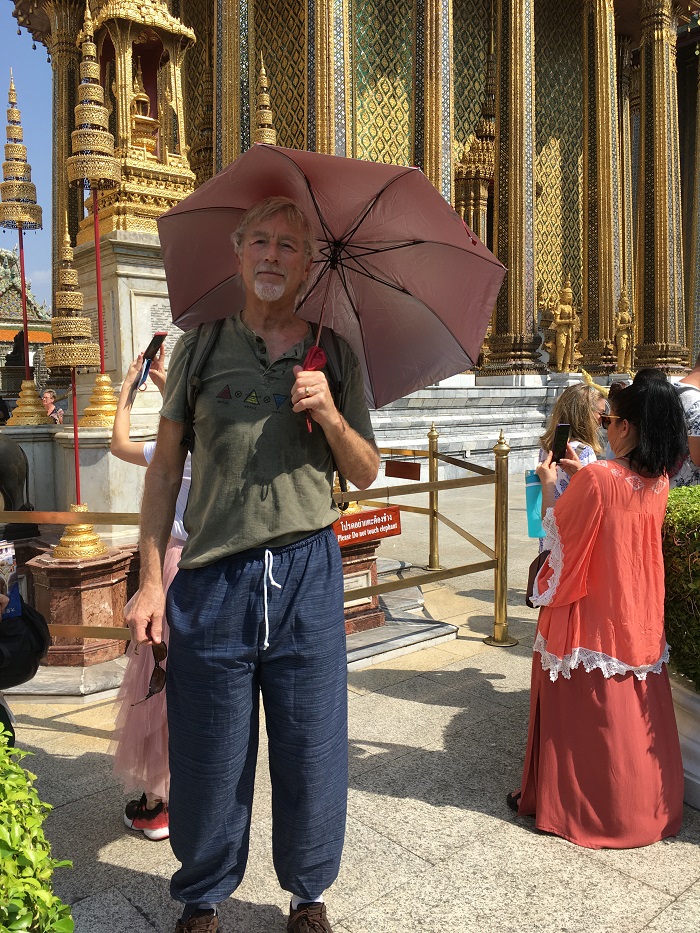
Note from Sara: Thor’s turn to model elegant tourist attire. These are the pants he was required to purchase at the Bangkok temple site to show respect and cover his long legs (the lengthiest pair they had). It was broiling hot, and he may have been wrung out from all those temples and statues I was exclaiming over…. But yes, I will recruit him for future posts.
*****
You will find The Rambling Writer’s blog posts here every Saturday. Sara’s latest novel from Book View Café is Pause, a First Place winner of the Chanticleer Somerset Award and a Pulpwood Queens International Book Club selection. “A must-read novel about friendship, love, and killer hot flashes.” (Mindy Klasky). Sign up for her quarterly email newsletter at www.sarastamey.com

Thor, thanks for filling in! In my post of two weeks ago, about our visit to the Gothic cathedral in Milan, Italy, you can see that the elaborate ornamentation on the exterior has worn very well. That’s because the builder insisted on marble for construction. And, yes, the introduction to the Bella Coola petroglyphs was very moving.